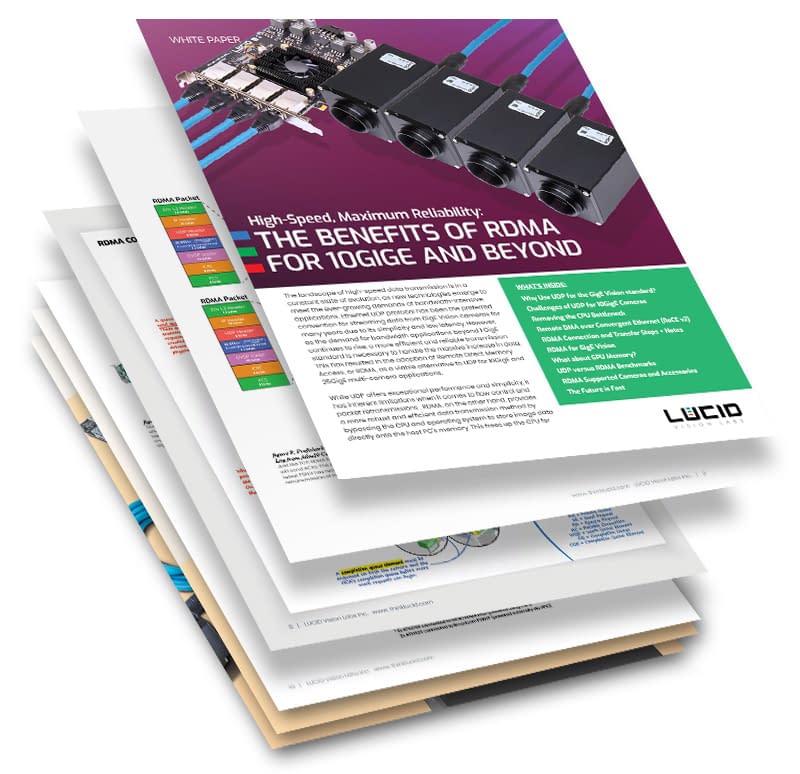Download White Paper
Why RDMA Matters: Overcoming Bottlenecks in High-Speed GigE Applications

This white paper delves into the ways in which RDMA technology improves high-speed Ethernet machine vision cameras. It explores the origins and mechanics of RDMA, as well as the RoCEv2 standard, providing a detailed comparison with traditional protocols such as TCP and UDP. The paper emphasizes the zero-copy transmission capability that RDMA provides, which enables data transmission to bypass the CPU and OS to improve data transfer reliability. Furthermore, the paper presents a comprehensive overview of how this feature affects 10GigE and 25GigE cameras, including preliminary benchmark results. By reading this white paper, you can gain valuable insights into the impact of RDMA technology on the machine vision camera industry.
What’s Inside:
• Why Use UDP for the GigE Vision standard?
• Challenges of UDP for 10GigE Cameras
• Removing the CPU Bottleneck
• Remote DMA over Convergent Ethernet (RoCE v2)
• RDMA Connection and Transfer Steps + Notes
• RDMA for GigE Vision
• What about GPU Memory?
• UDP versus RDMA Benchmarks
• RDMA Supported Cameras/Accessories
• The Future is Fast
Sneak Peek
LUCID 10GigE Cameras? • LUCID Atlas10 camera with RDMA firmware • RDMA 10GigE Host Channel Adapter (HCA) • (Optional) 10GigE Switch with PFC priority-enabled VLAN • Cat6 or better Ethernet cable



 Support Center
Support Center
